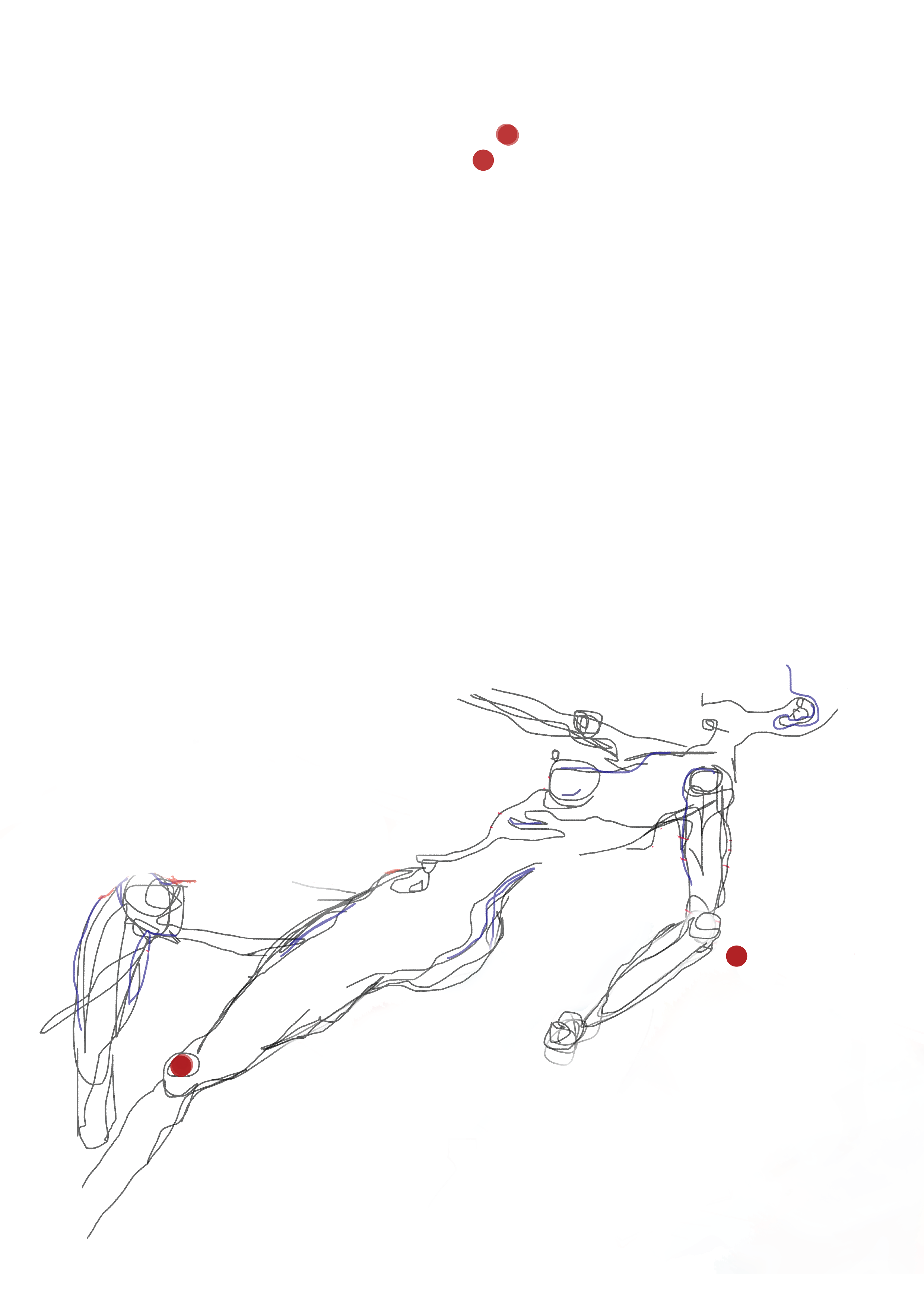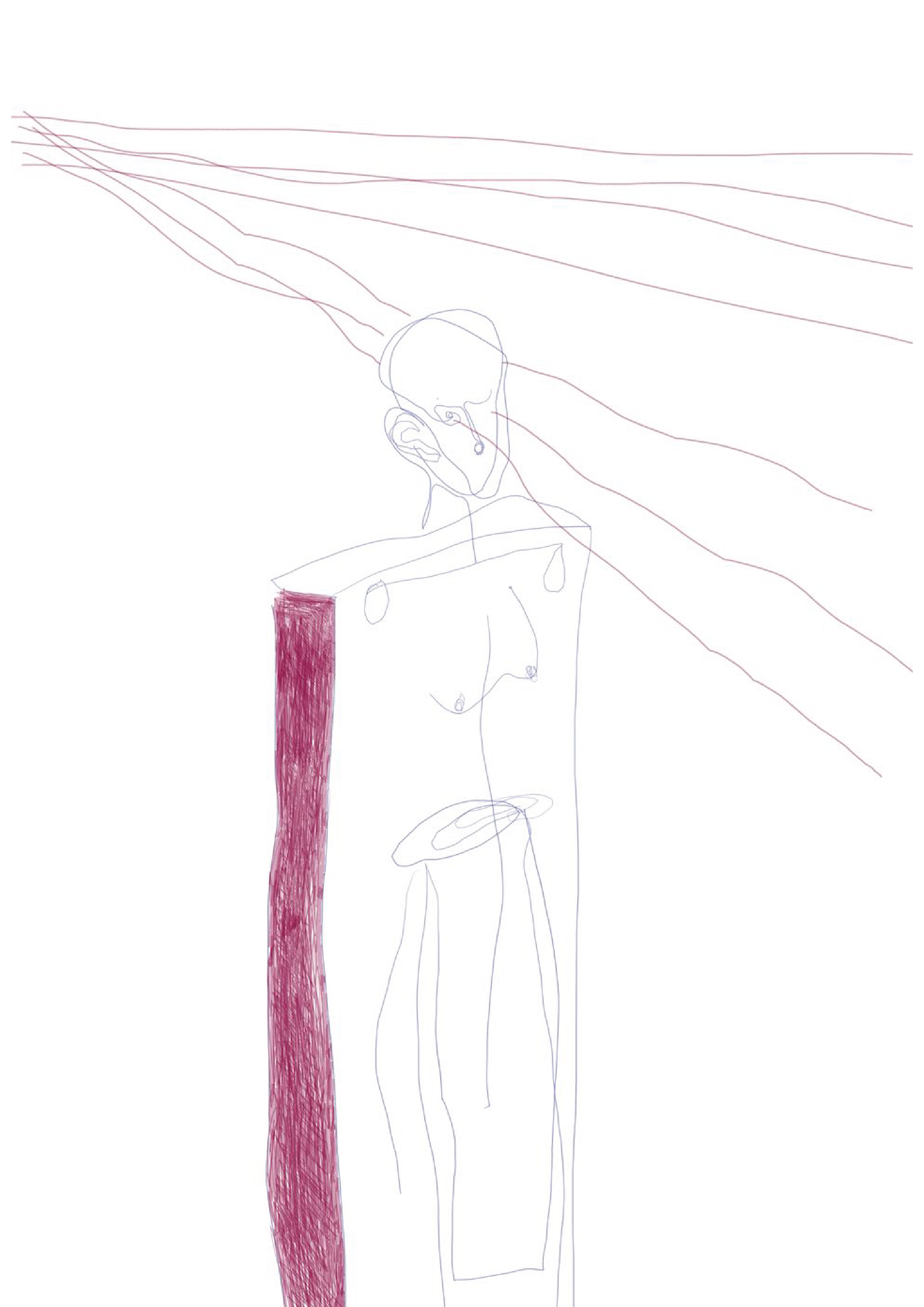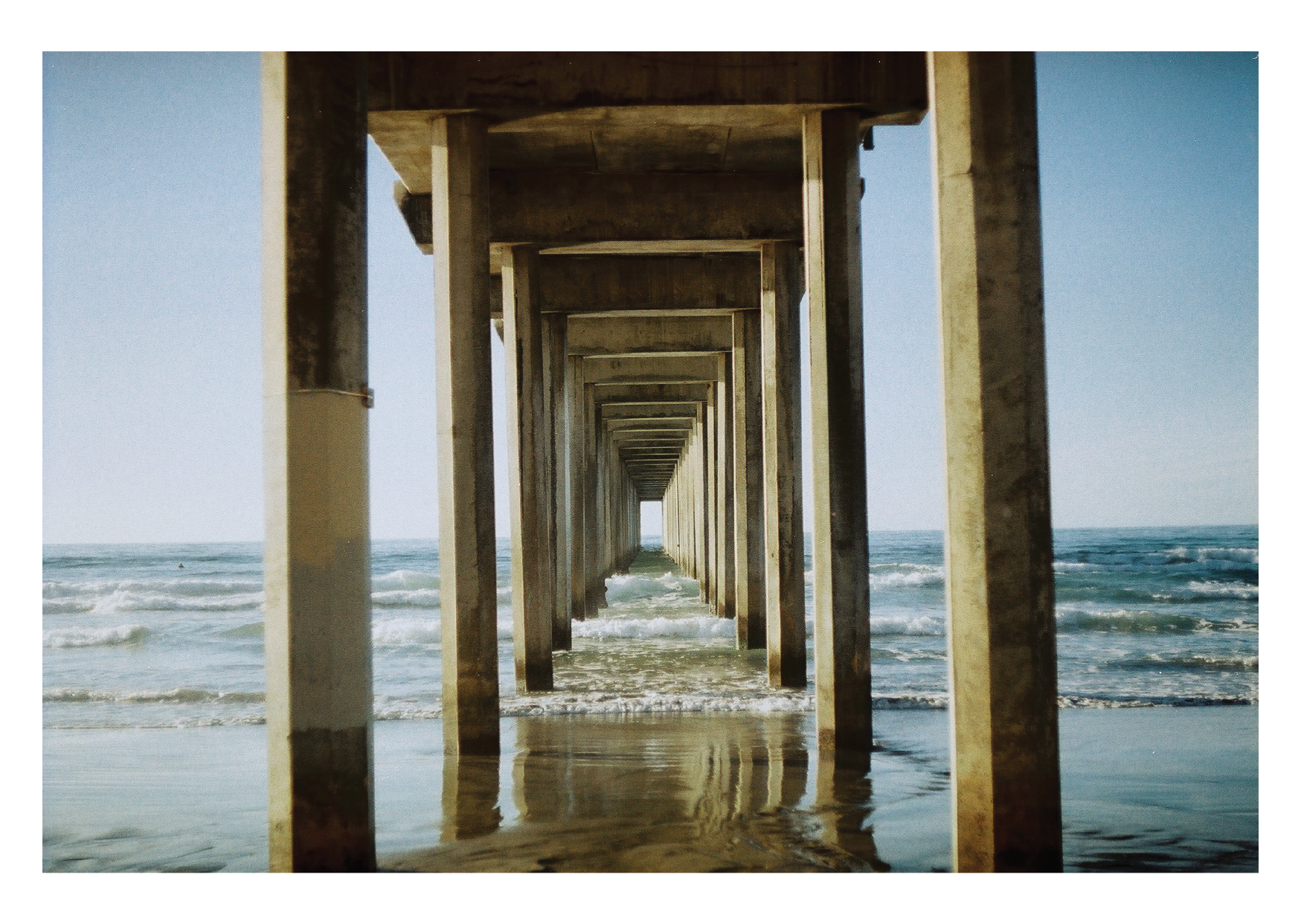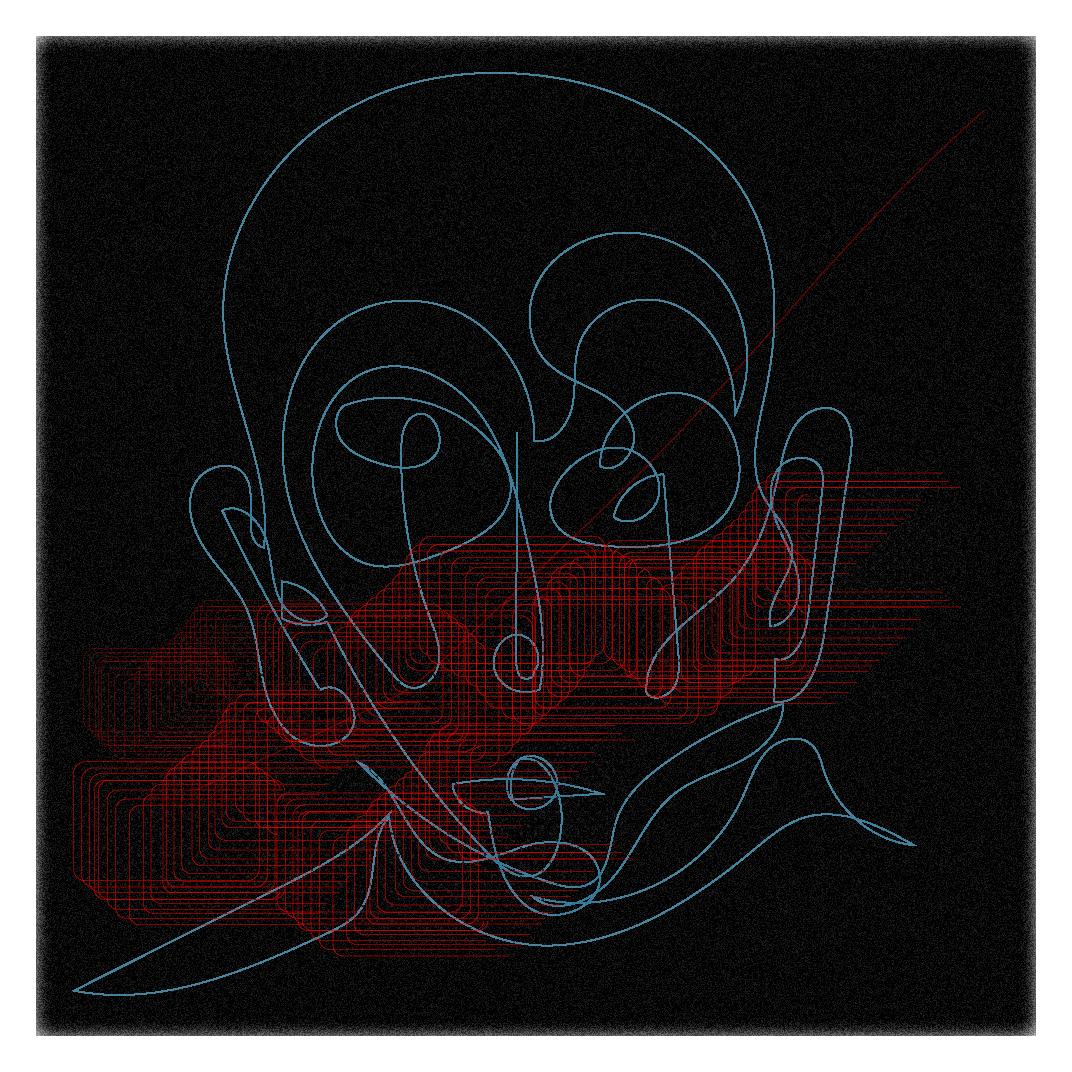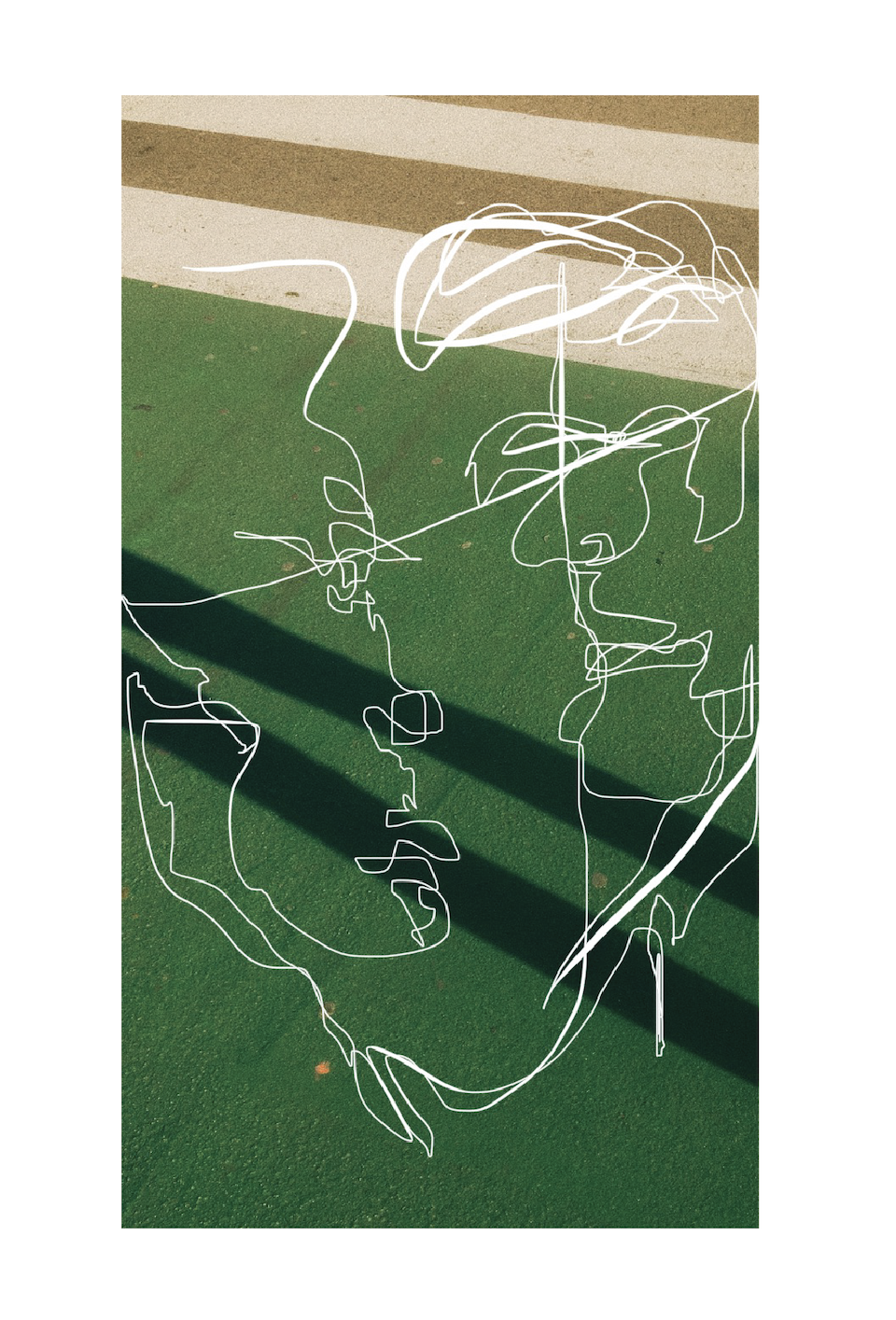CURATORIAL STATEMENTThe exhibition "Dialogue #1" opens a series of dialogues focused on a critical reflection on society and its institutes.
An exhibition itself serves as a platform for contemplation, critical analysis, discussions, and exchange of information and knowledge. The exhibition incorporates dialogues of various topics and dimensions, i.e. :
with yourself (self-reflection);
between an artist and a curator;
between an artist and the audience;
between a curator and the audience;
among the audience itself.
The exhibition raises 7 fundamental questions, which anyone can stumble upon when walking by the posters hung in the city's tunnel.
What am I made of? / Where do I run? / Am I free? / Do I see the reality as it is? / Do I belong to society? / Who am I? / Do I like what I do?
The posters are a metaphor for individual pages torn out of our diaries.
This is a return to a state of oblivion, the things we throw away, a return to that which frightens us but will nevertheless require us to address itself.
This manifestation is an attempt to create and stir a public discourse and private reflections of the public.
The posters had only been available in the public space for 3 days before they were promptly destroyed by the city authorities. This kind of a reaction reassures the role of the state as a machine of oppression, which tolerates no criticism, and attempts to control public discussions.
I would like to thank Anastasiia Denysenko, Natalia Martynenko, Stanislav Olenchenko, Yullia Shumishyna and Yuri Tolochko for their help, work and inspiration. You have been extremely supportive through this difficult time. I would also like to thank everyone who believed in this idea. We created this exhibition all together!
Polina Stohnushko, the Curator
At the intervention location in Tübingen, Germany. 2019
Literature
Baudrillard, J. (1998). The consumer society: Myths and structures. London: Sage Publications Ltd.
Bauman, Z. (2008). The Individualized Society. Cambridge: Polity.
Bourdieu, P. (1984). Distinction: A Social Critique of the
Judgement of Taste. 1st ed. Cambridge, MA: Harvard University Press
Durkheim, E., & Halls, W. D. (1984). The division of labor in society. New York: Free Press.
Durkheim, E. (1897), Suicide: A study in sociology. NewYork: The Free Press.
Foucault, M. (1997). Discipline and punish: the birth of the prison. New York: Pantheon Books.
Goffman, E. (1963). Stigma: Notes on the management of spoiled identity. Englewood Cliffs, N.J: Prentice-Hall.
Goffman, E. (1990). The presentation of self in everyday life.
Jameson, F. (1999). Postmodernism, or, the cultural logic of late capitalism. Durham: Duke University Press.
Lyotard, J.-F., Bennington, G., & Massumi, B. (1984). The postmodern condition: A report on knowledge.
Mead, G. H., & Morris, C. W. (1934). Mind, self & society from the standpoint of a social behaviorist. Chicago, ILl, University of Chicago Press.
Merton, R. K. (1968). Social theory and social structure.
Glencoe, IL: Free Press.
Park, R. (1952). Human Communities: the City and Human
Ecology. Glencoe: The Free Press.
Parsons, T. (1969). The concept of society: the components and their interrelations. In: Politics and social structure, New York: Free Press.
Parsons, T. (1991). The social system. 2nd ed. London: Routledge.
Sorokin, P. (1959). Social and Cultural Mobility. New York: The Free Press.
Films
Darren Aronofsky: Black Swan (2010)
Ingmar Bergman: Persona (1966)
Roman Bondarchuk: Vulkan (2018)
Yorgos Lanthimos: Dogtooth (2009)
Yorgos Lanthimos: The Lobster (2015)
Yorgos Lanthimos: Alps (2011)
Richard Linklater: Boyhood (2014)
David Lynch: Mulholland Drive (2001)
Ruben Östlund: The Square (2017)
Andrei Tarkovsky: Nostalgia (1983)
Lars von Trier. Dogville (2003)
Lars von Trier. The Idiots (1998)
Valentyn Vasyanovych: Black Level (2017)
Denis Villeneuve: The enemy (2013)
Thomas Vinterberg: The hunt (2012)
documentaries
Matthew Akers: Marina Abramovic: The Artist is Present(2012)
Rick Barnes, Olivia Neergaard-Holm, Jon Nguyen: David
Lynch: The Art Life (2017)
Karolina Bielawska: Call Me Marianna (2015)
Marco Del Fiol: Marina Abramovic In Brazil: The Space In Between (2016)
Stefan Sagmeister. The Happy Film (2016)
Chris Smith: Jim & Andy: The Great Beyond (2017)
Feliks Sobolev. I and Others (1971)
TV series
Jonathan Nolan, Lisa Joy. Westworld (2016)
Bruce Miller. The Handmaid's Tale (2017)
Charlie Covell: The End of the F***ing World (2017)
David E. Kelley: Big Little Lies (2017)
Nic Pizzolatto: True Detective (season 1) (2014)
Music
Dirty Beaches - Displaced
Smog - River Guard
Moby - The Poison Tree (David Lynch Remix)
Andy Stott - New Romantic
Gabriel Bruce - This Human Mess
Anna Caragnano & Donato Dozzy - Parola
Deru - 1979
Satoshi Ashikawa - Still Park - Ensemble
Dean Blunt - 50 Cent
The Haxan Cloak - Dieu
The National - Sleep Well Beast
Djrum - Mountains Pt. 1
Monic - Stampede
2 8 1 4 - 恢 复 / R e c o v e r y
Weval - Out Of The Game
Balam Acab - See Birds
King Krule - Czech One
Max Cooper - Order From Chaos
Four Tet - She Moves She
The Antlers - Kettering
Blur - Essex Dogs
DWIG - Orange Evening
Rhythm & Sound - Aerial
Cukor Bila Smert' - The Great Hen-Yuan' River
Jonny Greenwood - Convergence
Low Roar - Tonight, Tonight, Tonight
Andy Stott - We Stay Together (Part 1 and Part 2)
Alex Zhang Hungtai - Pierrot
Baltra - Fade Away
Gorillaz - Hong Kong
The literature list is composed by Polina Stohnushko, curator of the exhibition. It consists mostly of classical sociological works. With help of these texts you will be able to find the answers to many of the raised questions. Besides, you will get the opportunity to see and analyze society from a different perspective. Despite the fact that the works might be somewhat complex at times, they are very suspenseful and recommended as a reading to readers of all backgrounds.
The film list is composed by by Anastasiia Denysenko. It presents both films, documentaries, and TV-series.
The music list is made by by Stanislav Olenchenko. It offers a set of various genres and styles of music: from melancholic ballads to ambient noise compositions. Our recommendation is to listen to it in the presented order.
WHAT AM I MADE OF?
The formation of an individual by society is similar to the process of weaving. The threads are the various social and cultural norms, which are unconsciously incorporated into individuals. These are, for example, the way we speak, the profession we choose, our preferences in clothes and food, etc. Besides the control of mentality, the corporeality of a person is regulated as well. In that way, each individual receives certain roles, behavioral scenarios and the sense of belonging to a particular group. Consequently, various social institutions (e.g. state, family, education, etc.) act as particular points of support, which set the normative order and control its reproduction.
Untitled
November 2017
pen on paper, courtesy of the artist
Untitled
August 2017
digital illustration, courtesy of the artist
WHERE DO I RUN? (I)
A photo of Hoover Dam, the massive concrete dam on the border of Arizona and Nevada States (USA), originally served as the starting point for the entire exhibition. The continuation of this photo and its more detailed review you can find in the photo with a running man, taken in a seaside community of La Jolla (USA).
An image defect, namely the pink stripe running through the photo, symbolizes the life scenario of each person, which is to a large extent predetermined in advance. It can be a perfect following of all the rules or an escape from reality, but in every case, it is a personal marathon in which we are struggling to outrun or escape ourselves.
Untitled
January 2017
mobile photography, courtesy of the artist
Hoover Dam, USA
Untitled
January 2017
mobile photography, courtesy of the artist
Hoover Dam, USA
WHERE DO I RUN? (II)
A negative of Sequoia National Park (California, USA), seen in a glass showcase, is a symbol of the outcome of individual human history. The inability to clearly see the photos raises the problem of many personal stories' traceless disappearance. The code 8582, instead of the name of the negatives, symbolizes the loss of public interest, and thus the loss of information about the special aspects of the life of an individual as well. You could run a marathon and not even get a place in the world history of humanity, staying forever simply as a code of 4 numbers.
AM I FREE?
Individual actions of each person is a subjective decision about how to act at in a particular moment. But how free are we at such moments of choice? And can we be sure that our choice is actually ours and is not dictated by society in advance instead? The white space in two works depicting faces symbolizes a set of behavioral scenarios in which an individual is really free to choose. But the background is controlled by society. Thus, each of us has a certain degree of freedom, but it is limited. But can an individual even exist completely free, without the control of the state and its institutions? The photo which was taken in the area of La Jolla (San Diego, California, USA) serves as a metaphor for an individual's way: the Pacific ocean symbolizes freedom, and the columns are the symbol of control and restrictions. On the one hand, various frameworks set our direction and our limits, but on the other hand, can we sail the ocean without support.
Untitled
January 2018
film photography, courtesy of the artist
Untitled
September 2018
digital illustration, courtesy of the artist
DO I SEE THE REALITY AS IT IS?
How often do we question the reality and critically consider what is happening to us and around us? When was the last time we contemplated about our own awareness of our actions and social roles? The black stripes symbolize the unwillingness or fear of a qualitative analysis of everyday life since each of us is displeased of encountering disappointment. Therefore, many prefer acceptance and blind following. But is this really the best option?
Untitled
June 2018
digital illustration, courtesy of the artist
Untitled
June 2018
digital illustration, courtesy of the artist
Untitled
June 2018
digital illustration, courtesy of the artist
DO I BELONG TO SOCIETY?
Society is a structured system that enables all of its components to work smoothly. An individual, as an integral part of society, learns the order of the system, represented by a code - a certain set of cultural and social rules. With its help, the individual acquires full membership in the society, sacrificing his or her individuality. But at the moment of existential crises, when an a person critically analyzes the society and their own role in it, there is a breakdown of the system, which looks like a malfunction display. As the result of this process, a person has an opportunity to form his or her own system of selfhood.
Untitled
July 2018
digital illustration, courtesy of the artist
Untitled
July 2018
digital illustration, courtesy of the artist
WHO AM I?
How long have you been wondering about your subjectivity? How do we describe ourselves and how do others see us? Which daily roles do we play? Two deformed self-portraits of the artist are a kind of manifestation of the loss of identity. Due to the fact that we have to constantly deal with a lot of concepts of "us", which are imposed us by our family, education, advertising, etc., we lose ourselves and our individuality. Geometric figures in the middle symbolize the variety of individual potential: a personal set of different qualities and talents. The chaotic nature of the figures accurately demonstrates the lack of integrity within us, which is manifested on our faces.
Untitled
May 2018
mobile photography, courtesy of the artist
Untitled
August 2018
digital illustration, courtesy of the artist
Untitled
May 2018
mobile photography, courtesy of the artist
DO I LIKE WHAT I DO?
To be a proper member of society, an individual has to constantly adjust and incorporate himself or herself under a variety of frames and restrictions. In effect, the person becomes its own primary censor and constantly conducts unconscious control over his or her actions and thoughts, comparing them with a certain standard. This series of photographs were taken in various public spaces of Kyiv and Vienna, and it is the result of a non-participant observation and reflection of the artist. Documenting aspects of everyday routine, the artist drew various strangers in it in parallel. At the same time she was asking herself a number of questions: Who's allowed to talk here? Why is the passage prohibited? Why can't one sit here? and so on. The different threads around the frames symbolize the variety of restrictions.
Untitled
March - May 2018
photography and digital illustration, courtesy of the artist
Untitled
March - May 2018
photography and digital illustration, courtesy of the artist
Untitled
March - May 2018
photography and digital illustration, courtesy of the artist




